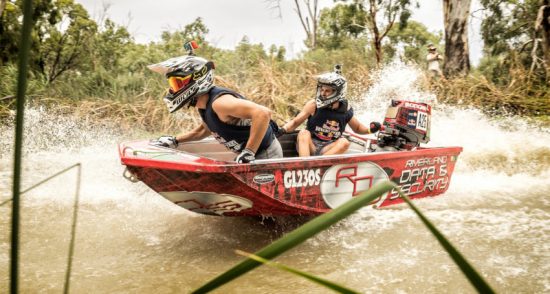How long do you think it will be before superyacht crews are staging their own Dinghy Derby using the yachts tender?
It might not be that long if crews begin to emulate the Australian fondness of Dinghy Derby for Daredevils
A race that started with two mates pushing their dinghies to the limit to see who could be first to the local fishing spot has evolved into one of the nation’s most exciting, and quintessentially Australian boating events.
The Red Bull Riverland Dinghy Derby, will be held during February on the Murray River in Renmark, in South Australia and has again received record nominations with teams coming from as far away as Canada and Mongolia to compete.
This year’s event has so far attracted 123 nominations eclipsing the previous record of 119 set in 2017.
The first Dinghy Derby was run in 1981 but the event has swelled significantly since Red Bull came on board for the 2015 event.
The heavily modified dinghies race at speeds of up to 48 knots along Australia’s longest river, The Murray, and the narrow creek networks surrounding Renmark, a Riverland town 250km northeast of the South Australian capital Adelaide.
Each boat has two crew: one crewmember drives the dinghy while the other acts as navigator and also moves around the boat to shift the weight to help manoeuvre through the tight and challenging course that includes narrow twists and turns, overhanging trees and submerged logs.
The race is organised by the Riverland Dinghy Club, a group of locals who volunteer their time to bring the event together every year.
As well as being the naming rights sponsor, Red Bull brings its world-renowned film crew to the event, capturing the thrills and spills of the Derby for millions of its dedicated viewers around the globe
The Derby has also grown into a six-race series throughout the year on a variety of courses in the area.
February marks the start of the season with a three-day festival and the first two rounds of the six-race series – a Dash 4 Cash sprint time trial on Friday, February 2, in front of the Renmark Riverfront and the main 100km derby race on the Sunday.
Seven classes ranging from 15hp through to 300cc and 30hp Sports classes with top speeds of more than 45 knots will contest the events.
Competitors perform in the “Dash 4 Cash” during the Red Bull Dinghy Derby in Renmark, Australia on February 3, 2017.
Riverland Dinghy Club President Scott Jenke said this year a local tour company would for the first time take spectators by bus and then boat to some of the more spectacular and remote viewing areas along the creek network.
“That’s mainly designed for people who don’t have local access to boats so we’ll be interested to see how that goes,” he said.
“The crowds are always good throughout the creeks and one of the key spots is ‘Carnage Corner’, there’s always a bit of action there hence the name.
“It’s nothing to see three or four thousand people line the creeks similar to the Dash 4 Cash, which is a free event on the town’s main foreshore.”
Jenke said as well as the two international entries there were many teams from other Australian states this year including Western Australia (25), Victoria (12), New South Wales (7) and Queensland (4).
“It’s uniquely Australian – what could be more unique than a couple of guys originally getting together and saying I can get back to the town quicker than you or I can get to the fishing spot quicker than you and from that stemmed the development of the first race back in ’81.
“Back then it was sort of a race with a group of guys and their fishing boats, now we’ve seen it evolve in the past 10-15 years into a championships series.
Jenke said the growth of the race and all events across the 8-month season in recent years had been phenomenal.
“There’s nothing of this sort of standard and scale and to me it just proves that it’s cemented its spot as a national event,” he said.
“The big thing we noticed last year was the number of competitors who raced the whole season.
“There used to be a big drop off after the derby but now at the end of the year we’ve still got 60 or 70 boats that have competed all through the season and it’s growing every year.”

